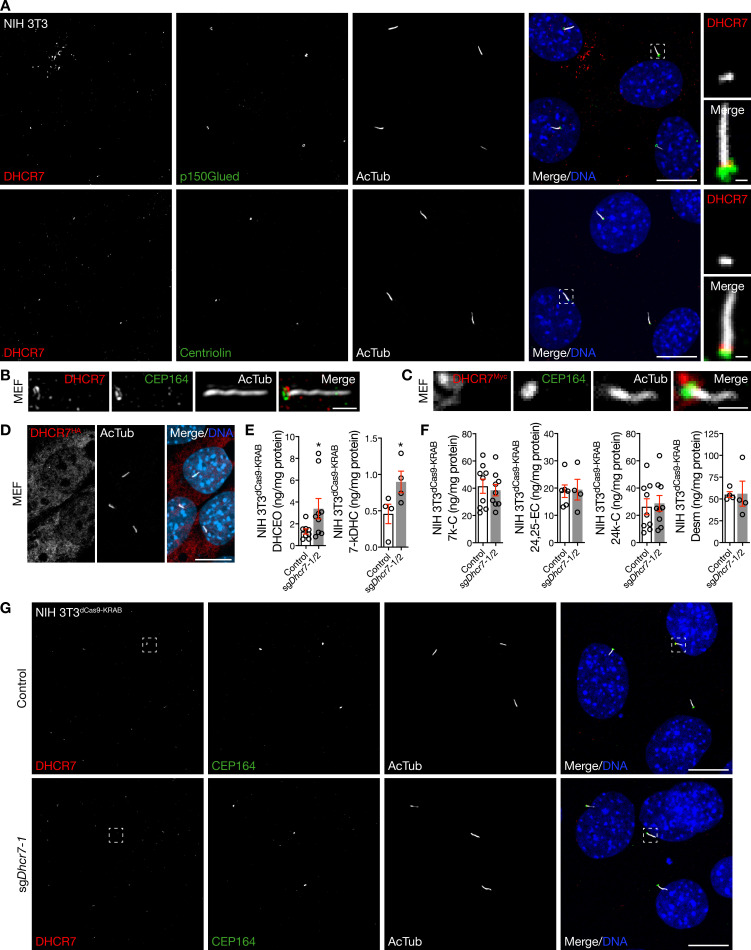Figure S1.
DHCR7 localizes near the ciliary base. (A) Immunofluorescence confocal microscopy for DHCR7, the ciliary protein acetylated tubulin (AcTub), and the centriole proteins p150Glued or centriolin, demonstrates that DHCR7 localizes near the ciliary base in NIH 3T3 cells. DNA is marked with Hoechst 33342. Main scale bar, 10 µm. Inset scale bar, 1 µm. (B) Superresolution microscopy validates DHCR7 localization near the ciliary base (marked by AcTub) at the level of CEP164 in MEFs. Scale bar, 1 µm. (C) Immunofluorescence confocal microscopy of MEFs transfected with Dhcr7Myc in pCMV6-Entry using Lipofectamine demonstrates that exogenous DHCR7 can localize near the ciliary base, as marked by the centriole protein CEP164. Scale bar, 1 µm. (D) Immunofluorescence confocal microscopy of MEFs transfected with Dhcr7HA in pCDNA3 using FuGENE demonstrates that exogenous DHCR7 can localize away from the ciliary base. DNA is marked with Hoechst 33342. Scale bar, 10 µm. (E and F) Mass spectrometry–based sterolomics demonstrate increased expression of the 7-DHC oxidation by-products DHCEO and 7-keto-7-dehydroxycholesterol (7-kDHC), but no change in expression of Smoothened-activating oxysterols produced by other enzymes, in NIH 3T3dCas9-KRAB cells transduced with sgDhcr7 compared with transduction control (Student’s t test). (G) Immunofluorescence confocal microscopy for DHCR7 after transduction of sgDhcr7 in NIH 3T3dCas9-KRAB cells confirms DHCR7 localization near the ciliary base. DNA is marked with Hoechst 33342. Boxes correspond to Fig. 1 G. Note that speckled immunofluorescent staining away from the ciliary microenvironment does not attenuate with sgDhcr7 transduction, suggestive of nonspecific staining. Scale bar, 10 µm. *, P ≤ 0.05. Error bars represent SEM. The sample size of each experiment is represented by the number of independent data points on each graph. Each experiment is representative of at least three independent biological replicates. 24,25-EC, 24,25-epoxycholesterol; 24k-C, 24-keto-cholesterol; Desm, desmosterol.

